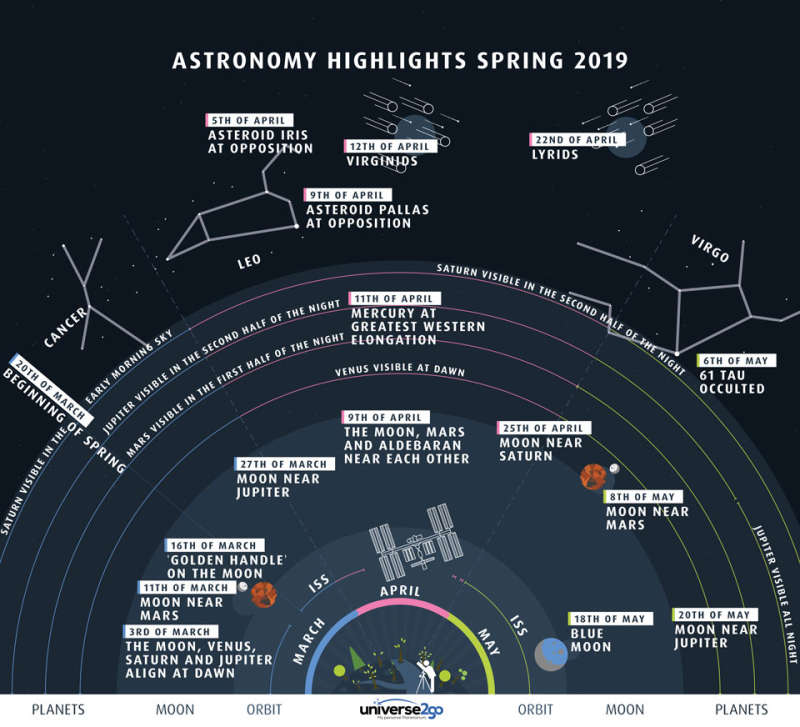Credit & Copyright: Universe2go.com
Explanation:
What can you see in the night sky this season?
The featured graphic gives a few highlights for
Earth's northern hemisphere.
Viewed as a clock face centered at the bottom, early (northern) spring sky events
fan out toward the left, while late spring events are projected toward the right.
Objects relatively close to
Earth
are illustrated, in general, as nearer to the cartoon figure with the telescope at
the bottom center -- although almost
everything pictured
can be seen without a telescope.
As happens during any season, constellations appear the same year to year, and, as usual, the
Lyrids meteor shower will peak in mid-April.
Also as usual, the
International Space Station (ISS)
can be seen, at times, as a bright spot
drifting across the sky after sunset.
After the
Vernal Equinox next week, the length of daytime will
be greater than the length of nighttime in Earth's northern hemisphere, an inequality
that will escalate as the
spring season
develops.
Also as spring ages,
Jupiter becomes visible increasingly earlier in the night.
As spring draws to a close, the month of May will feature two full moons,
the second of which is called a
Blue Moon.
1999 2000 2001 2002 2003 2004 2005 2006 2007 2008 2009 2010 2011 2012 2013 2014 2015 2016 2017 2018 2019 2020 2021 2022 2023 2024 2025 |
Yanvar' Fevral' Mart Aprel' Mai Iyun' Iyul' Avgust Sentyabr' Oktyabr' Noyabr' Dekabr' |
NASA Web Site Statements, Warnings, and Disclaimers
NASA Official: Jay Norris. Specific rights apply.
A service of: LHEA at NASA / GSFC
& Michigan Tech. U.
|
Publikacii s klyuchevymi slovami:
night sky - nochnoe nebo
Publikacii so slovami: night sky - nochnoe nebo | |
Sm. takzhe:
Vse publikacii na tu zhe temu >> | |
